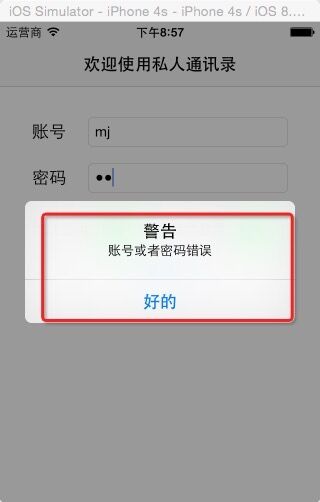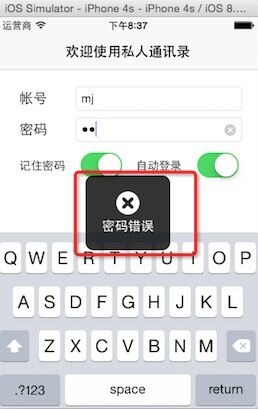目前为止,已经知道3种IOS弹框:
1、系统弹框-底部弹框 UIActionSheet
(1)用法:处理用户非常危险的操作,比如注销系统等
(2)举例:
UIActionSheet *sheet = [[UIActionSheet alloc] initWithTitle:@"确定要注销?" delegate:self cancelButtonTitle:@"取消" destructiveButtonTitle:@"确定" otherButtonTitles:nil, nil]; [sheet showInView:self.view];
(3)效果

2、系统弹框-中间弹框
(1)用法:处理一般提醒,如果非必须,尽量不用,影响友好性。
(2)举例:
UIAlertView *alert = [[UIAlertView alloc] initWithTitle:@"警告" message:@"账号或者密码错误" delegate:nil cancelButtonTitle:@"好的" otherButtonTitles:nil, nil]; [alert show];
(3)效果:
在登陆界面,输入账号密码,如果有一项输入错误,弹框提示,必须点击“好的”才能重新输入

3、三方框架MBProgressHuD弹框-中间弹框
(1)用法:需要引入该 文件,这里在它基础上,写了一个分类,头文件“MBprogressHUD+MJ.h”,更方便方法调用。其他需要调用方法的文件包含该头文件即可。优点在于只提示1秒钟,然后迅速消失,不需要用户去点击。比较友好。
(2)举例:
[MBProgressHUD showError:@"密码错误"]; [MBProgressHUD showMessage:@"登录中...."];
(3)效果:

===========================
http://blog.csdn.net/qq_17007915/article/details/50216679